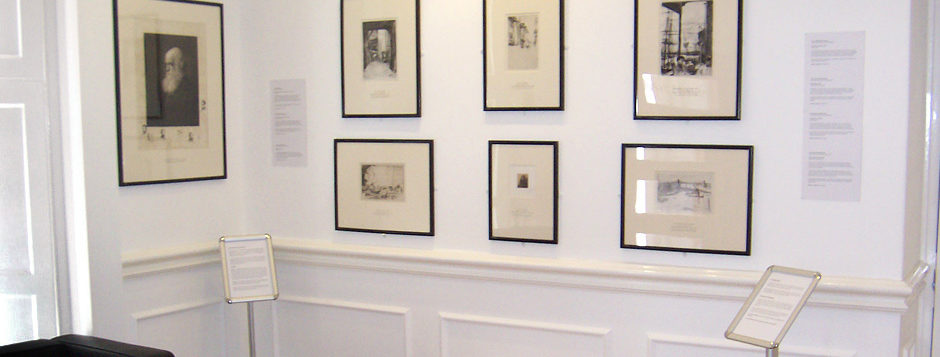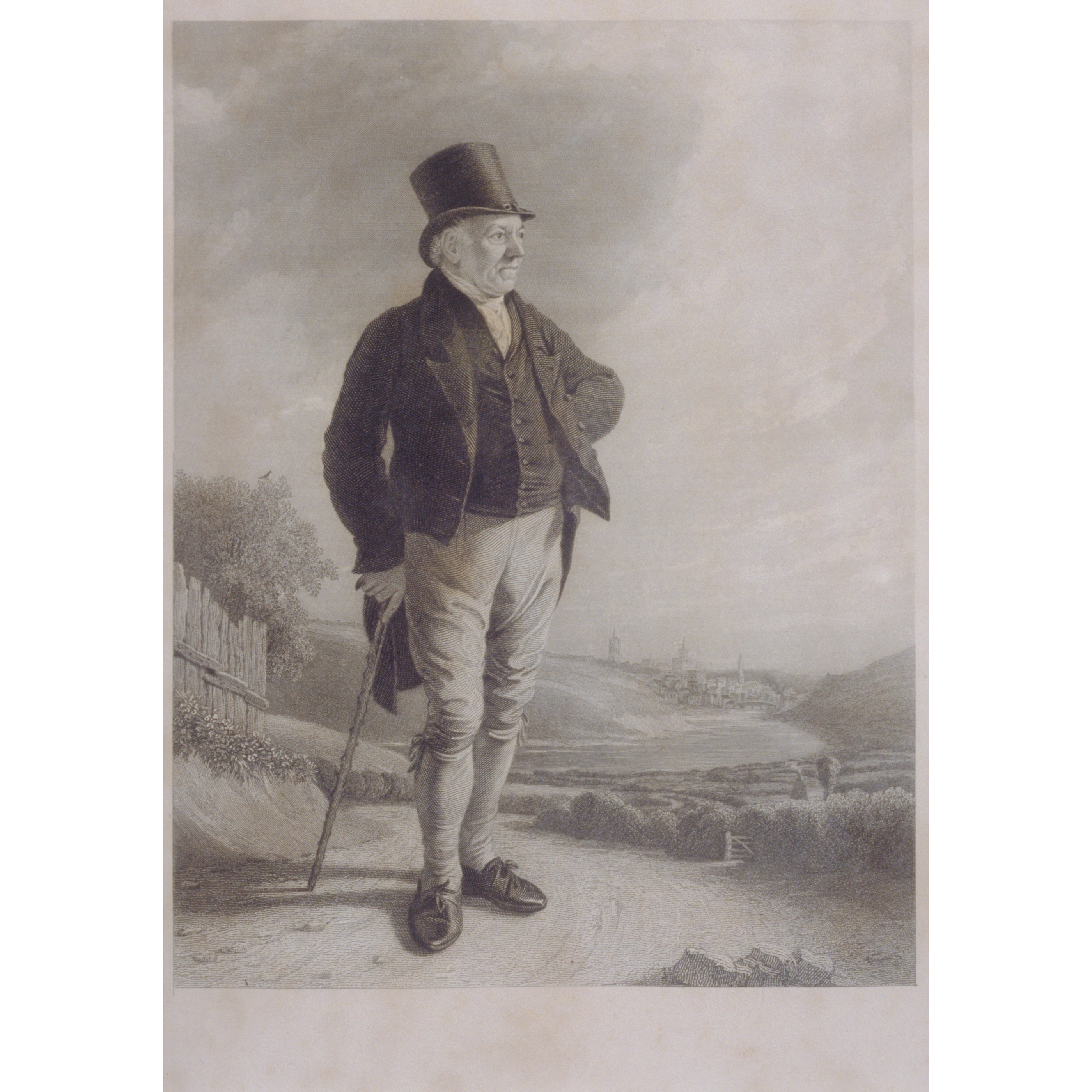Dundee Art Galleries & Museum: 272-1987-2
Artist: Bacon, Frederick
Date: 1852
State: 1/1
Size: 20.3 x 15.2 cm
Medium: Line Engraving
| Details | Line engraving with some stipple work. Black ink on moderately thick, slightly textured, cream wove paper.
Other impressions were mounted chine-collé but this doesn’t appear to be the case with this print. Chine-collé is a process where, prior to the printing, the paper to be printed is mounted on a heavier paper. This provides support to thin papers and allows more detail to be printed. The Printsellers’ Association Index of Painters and Engravers from 1894 notes the print to be a line engraving and to have been published by R. Turner, Newcastle and Colnaghi and Co., London and was declared on September 1852. |
| Description | Thomas Bewick (1753-1828) was an influential English wood engraver and ornithologist who revolutionised the process of wood engraving simply by using boxwood cut against the grain. This allowed for much more precise and fine engraving.
The source for Bacon’s portrait comes from James Ramsay’s painting The Lost Child, 1823 (City Library Local Studies Library, Newcastle upon Tyne). Bewick, in a similar pose, can be seen on the far left. Bacon transfers Bewick to a more rural setting where, in the distance, Newcastle and the river Tyne can be seen. In a short pamphlet held in the National Art Library, Victoria and Albert Museum, titled Notes by Mr. A.G. Stephens on Thomas Bewick illustrating a loan collection of his Drawings and Woodcuts (Fine Art Society’s Galleries, London 1880) T.S. Good provides a character portrait of the artist; ‘Bewick was a man of athletic make, nearly 6 feet high and proportionally stout. He possessed great personal courage, and in his younger years was not slow to repay an insult with personal chastisement. On one occasion being assaulted by two pitmen on returning from a visit to Chevyburn, he resolutely turned upon the aggressors, and as he said, “paid them both well”. The expression of Bewick’s countenance was manly and open, and his dark eyes sparkled with intelligence.’ (p.36) According to the sales catalogue Residue of the Valuable Collection of Books belonging to the late J.G. Orchar, Ex-Provost of Broughty Ferry, and sold by the instruction of the Trustees which was held on Wednesday 10th September 1924 at Gillies’ Auction Rooms, Fort Street, Broughty Ferry, Orchar had in his collection a number of books which included illustrations by Bewick, including Herman Boaz’s Anglers Progress (1820), J. Huddlestone Wynne’s Tales for Youth (1794) and Richard Johnson’s The Blossoms of Morality (1796). Dundee Central Library; Local History Centre: Lamb Collection 8(8). |
| Other Collections |
|
| References |
|

